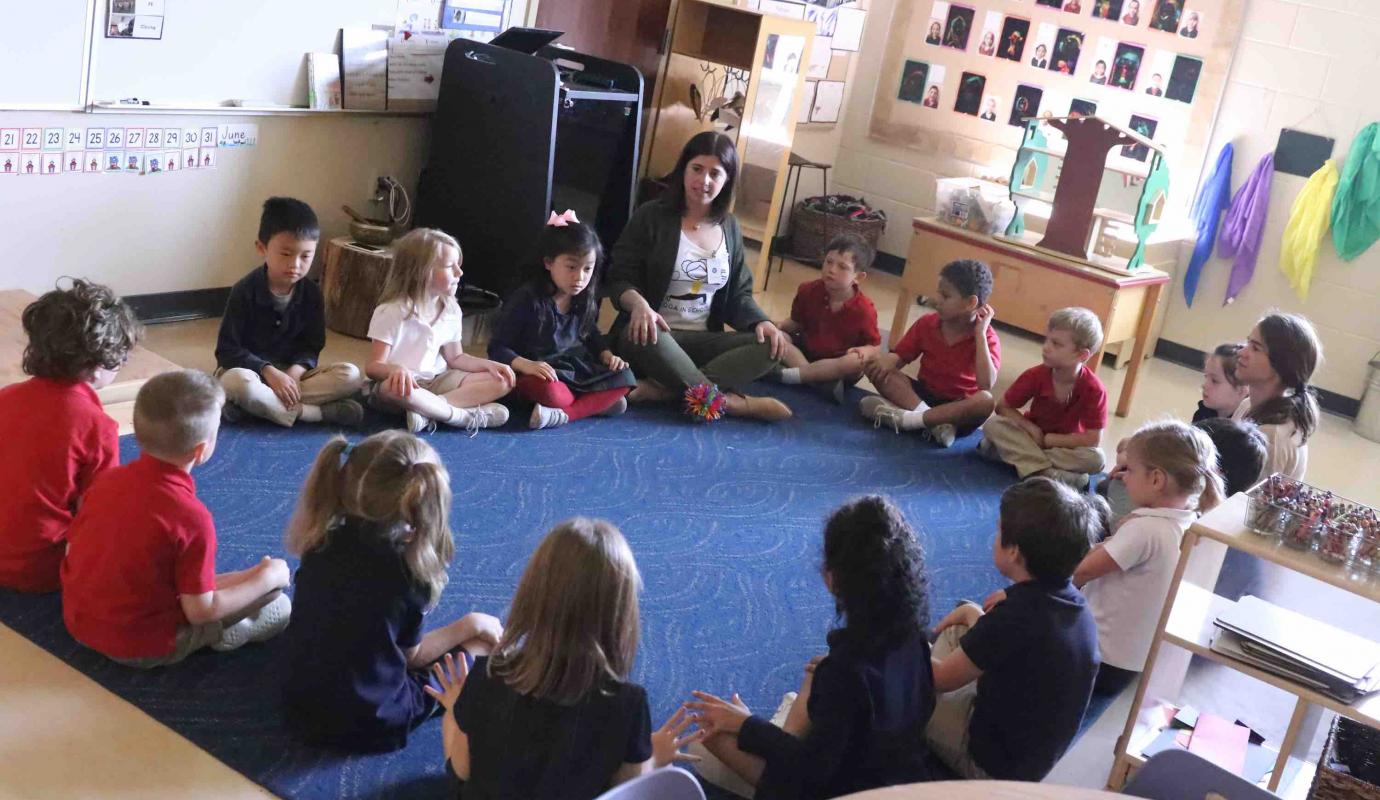Imagine a four-year-old getting upset. Her face gets red, her fists are clenched. She may yell or stomp her foot. Then she takes a deep breath, in through her nose and out through her nose. Her stomach rises and falls with each breath. She closes her eyes and imagines her beach vacation with the gentle waves and warm sun. She opens her eyes, opens her fists, and she is able to verbalize her feelings and ask a teacher for help. This scenario may seem tricky or impossible for many young children as they are still developing their self-regulation and how to manage big feelings, but our early childhood teachers are observing many of our youngest students doing just this.
Do you want to know the secret?
Mindfulness. Jon Kabat-Zan creator of the research-backed stress-reduction program Mindfulness-Based Stress Reduction defines mindfulness as, “…paying attention in a particular way: on purpose, in the present moment, and nonjudgmentally. It is having the presence of heart.” He states that mindfulness promotes well-being, improves your working memory, raises your happiness set-point, shrinks stress regions in your brain, and helps increase resiliency which is an individual’s ability to recover from setbacks and adapt well to change. Who wouldn’t want our children to begin developing these skills at the age of three? Knowing the benefits of practicing mindfulness, a year-long goal for our early childhood program, inspired teachers to explore ways to incorporate mindful moments into classrooms.
The early childhood teachers teamed up with the local non-profit organization Youth Yoga Project. Their program coordinator, Julia Handelman, guided our teachers through many of the activities that they would use in their own classrooms. Ms. Handelman also spent time in the early childhood classrooms, instructing alongside the teachers and modeling mindful moment techniques directly with the students.
Wellington’s focus on mindfulness in the classroom has inspired teachers to incorporate mindful moments into daily activities. Children now center themselves on the carpets for story time or community building activities. An invisible string pulls their heads up tall and their shoulders straighten out as they maintain core strength to attend to a task. Our youngest students use simple yoga poses to help relax and calm their bodies. Moving from a strong mountain pose into a relaxed child’s pose helps them focus their thoughts and ideas. Children practice belly breathing, moving their bellies as they take deep breaths in and out. Teachers encourage our young children to close their eyes and imagine different pictures in their heads, and you can see children’s bodies relax during these guided imagery sessions after a busy brain break. These mindful moments give our children tools to begin to successfully self-regulate, center themselves for the next step in learning, and provide them with an opportunity for a quiet moment during their active days.
Mindful moments can also be helpful at home as children move from playing to dinner time to bedtime. Some families feel stress during morning routines and ensuring children are ready for school on time. Below are a few ways you might incorporate mindful moments in your own home.
- Belly breaths are powerful! Breathing through the nose and out of the nose sends a signal to the brain to slow down. Have your child lay on the floor and put a small stuffed animal on her belly. Breathing in through the nose will raise the animal, releasing her breath will lower the animal.
- Establish a cozy space in your home such as a quiet corner with picture books and soft pillows. Your child may self-elect to use the cozy space when he is feeling big feelings or needs a quiet moment.
- Before bedtime, turn off the lights and ask your child to find a comfortable position. Talk your child through guided imagery, encouraging her to imagine a calm space such as the beach, the woods, or a favorite memory.
- Focus on the positive. At bedtime, encourage your child to share what went well throughout his day Ask your child what she is looking forward to during breakfast. Focusing on the positives can change the way we view the world, even when there are challenges or big tasks that day.
– Shelley Brown P ’32, early childhood coordinator & academic coach
Additional resources:
